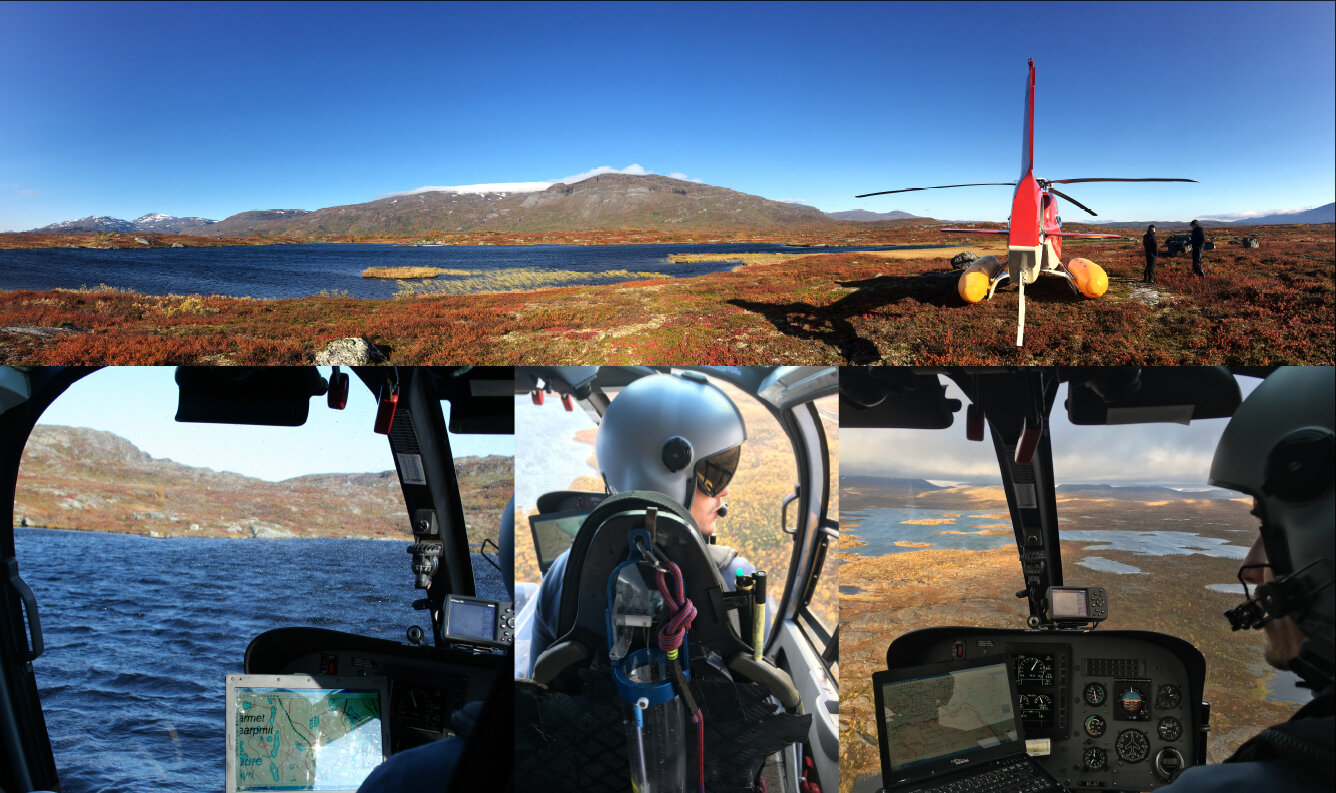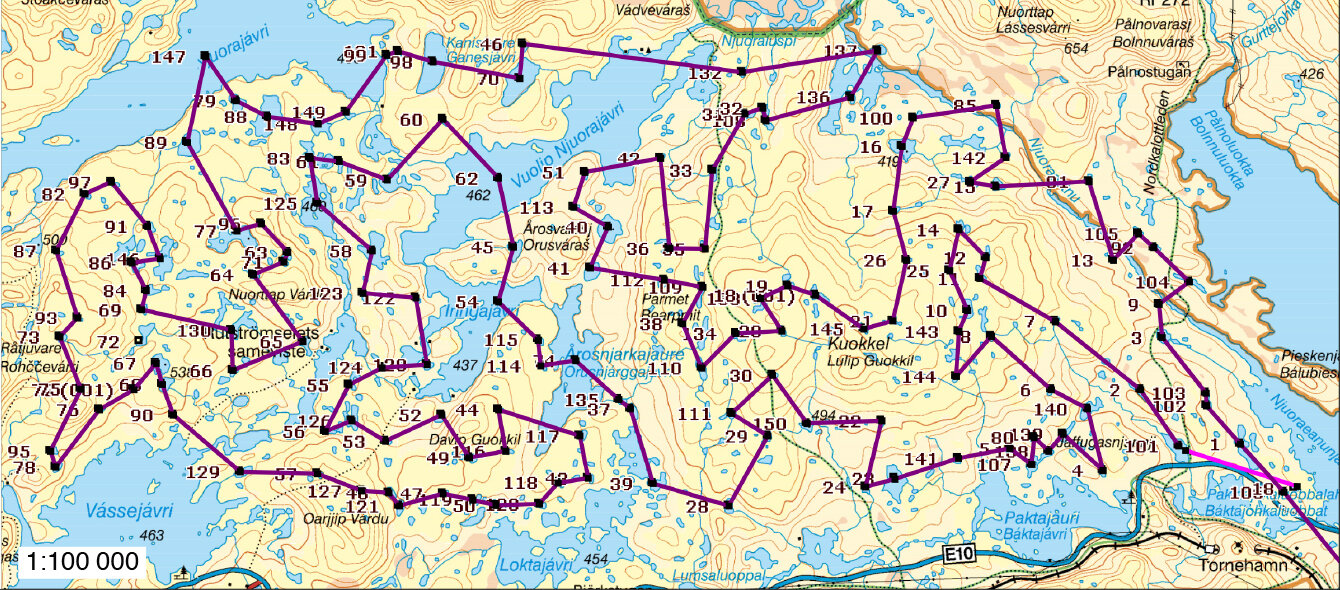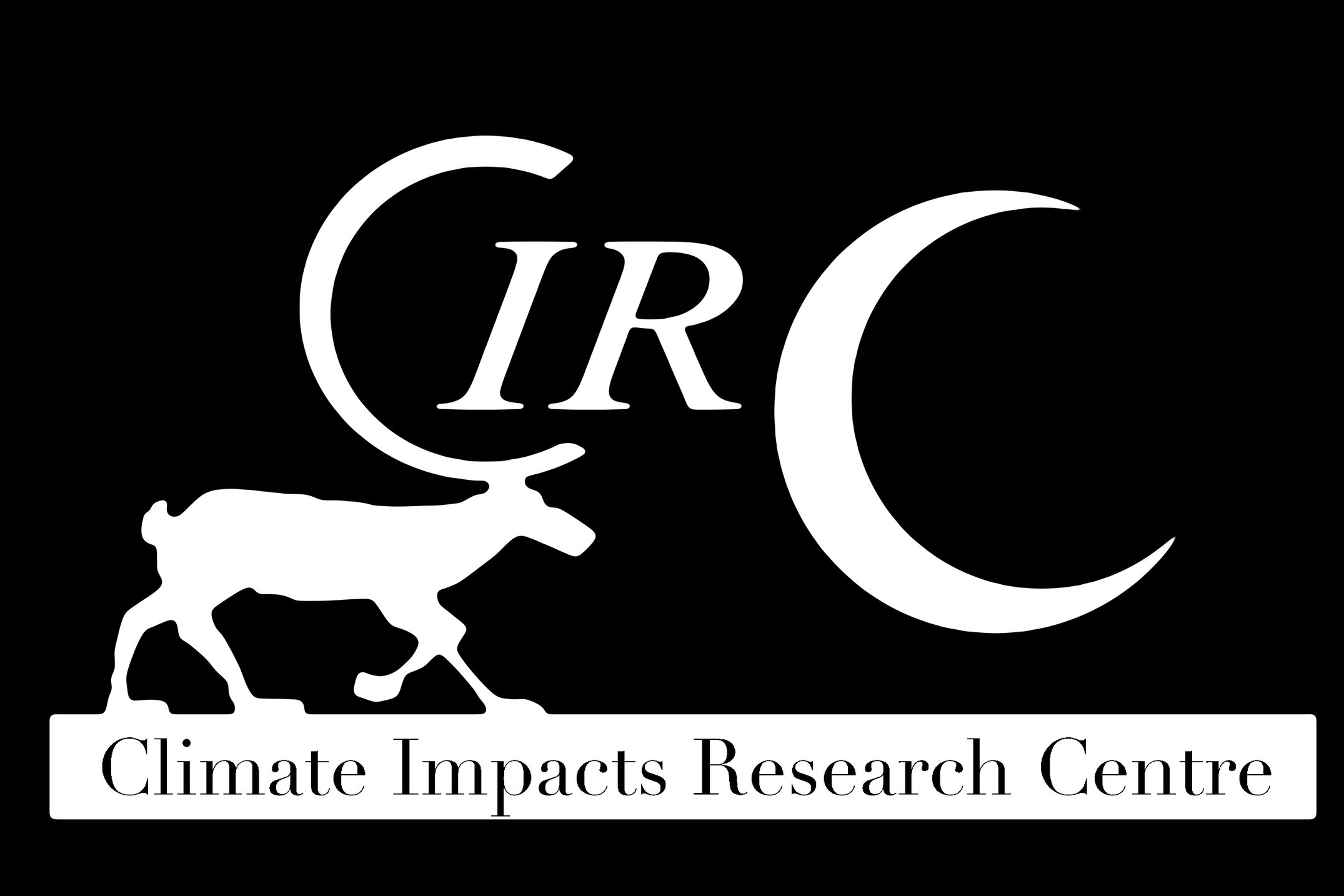Airborne Limnological Observatory
Identifying and quantifying current and future climate impacts on lake ecosystems processes such as greenhouse gas emission and carbon burial in sediments at landscape scales is at the forefront of current research. Landscape scale lake models make it possible to answer these questions. However, models are as good as their validation. For such an approach to be successful, it is necessary to use large datasets of ecosystem level observations carried out at landscape scales.
To overcome this limitation I have worked to develop lake data gathering at large scales using helicopter based sampling and measurements. Hence, during September 2017, I set a pilot program to sample 150 lakes in the Abisko region of the Swedish arctic. We used a Eurocopter 120B modified helicopter and equipped with floats and which allows landing on the lake surface and carry out lake water sampling and deployment of fast measuring sensor. This work set the beginning of developing helicopter based lake sampling and more complex measurements into a research platform: The Airborne Limnological Observatory.
This pilot survey has already resulted in a published paper (Berggren et al. 2019, Limnology and Oceanography) indicating that browning of subarctic lakes systematically change the way that bacteria interact with the ambient dissolved organic matter pool.




